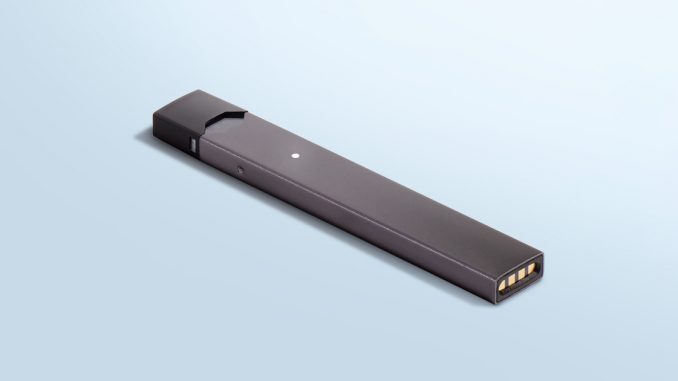
By Alexis Steagall (News Editor) and Nicole Bergendahl (Staff Writer)


Over the past decade, U.S. tobacco cigarette consumption has decreased, but a new type of addictive consumption has hit the market: e-cigarettes.
Federal health officials are warning that teen vaping has reached epidemic levels and U.S. Food and Drug Administration officials are cracking down on the sale of e-cigarettes to minors both online and from brick and mortar stores.
“We share the belief that these products should never be marketed to, sold to, or used by kids, and we need to make every effort to prevent kids from getting hooked on nicotine,” said FDA Commissioner Scott Gottlieb, in a statement released on the FDA website earlier this year.
Most youth who vape that were interviewed by The Pulse stated they were aware using e-cigarettes carries risks. But without all the chemicals labeled correctly on the product packaging — as a recent Marquette University and Milwaukee Journal-Sentinel investigation showed — health officials and the public are just beginning to understand the health impacts of vaping products.
Many teenagers say that vaping is now more common than traditional cigarettes among their peers.
When e-cigarettes first came out, manufacturers marketed them as a way to help smokers reduce the levels of nicotine they put into their body, but over the past few years companies have appealed to younger audiences and new users.
On Sept. 28, as part of its crackdown, the FDA conducted a surprise inspection of JUUL Labs, uncovering thousands of pages of documents of data revealing clever marketing techniques to draw in the younger crowds. One such document discussed creating flavors that appeal to children and teens.
“Disclaimer: We recommend keeping a napkin on hand in case you drool over these dessert e-juice descriptions,” a quote directly from Vapor 4Life’s webpage.
Another aspect that draws in teenagers is the nicotine itself, which unlocks different pleasure sections of the brain causing a relaxing effect.
Aside from nicotine, some vape juices contain other chemicals known to quickly destroy lungs: diacetyl and 2,3-pentanedione. Each are used in the manufacturing of microwave popcorn and the coffee roasting process. The Occupational Safety
and Health Administration has determined extended exposure of these chemicals causes lung damage.
Here at Indian Trail High School & Academy, a no vaping policy for students is a challenge for teachers and security to enforce because teens will cleverly use JUULs that resemble USB drives to avoid detection. They are easily concealable and quick to use. Besides the noted health risks, vape pen emissions are also capable of setting off fire alarms, said Catherine Hagg, one of IT’s dean of students.
“I have seen other kids in class just make sure the teacher isn’t there and they vape,” said an IT student who admits to using vape products. “People usually have the small vapes so no one sees.”
While teenage rebellion against authority isn’t anything new, the real deception may be coming from tobacco companies as they target teens with e-cigarette flavors that sound like childhood candies and mask the real health dangers of their products’ ingredients.
“If vaping were something good for you, I’d support you in your actions, however, nicotine and nicotine products have been proven, for a host of reasons, to be harmful for you. Therefore, I would not support a student who decided to experiment with vaping, and would strongly discourage the action,” said Hagg.
Still, some teens claim that e-cigarettes serve as their coping mechanism for stress.
“Vaping helps me relax and helps me with anxiety and stress. I would rather vape than smoke a cigarette because that’s worse for you,” said an underage IT teen who admittedly vapes.
This, however, may not be true. The American Lung Association warns, since so many of the chemicals in vaping formulas have yet to be evaluated for long-term impact.
While some teens view vaping as “a phase” in high school that they don’t want to continue in the future, the vast majority of students who participated in a survey conducted by The Pulse said they were underage, addicted, and didn’t want to quit.
Whether it is just a dangerous phase or a path to a lifelong addiction, it is a problem that school officials want to address.
“The use of nicotine in any form is prohibited in KUSD schools and on school property. This includes electronic cigarettes or any nicotine delivery device. Any student who violates the Kenosha Unified School District policy will be subject to disciplinary action,” said Hagg.
Meantime, as its next step to curb teen usage, the FDA plans to invest in anti-vape ads to place in school bathrooms. As of yet though, IT officials haven’t been contacted about this leg of the FDA’s anti-vaping campaign.
